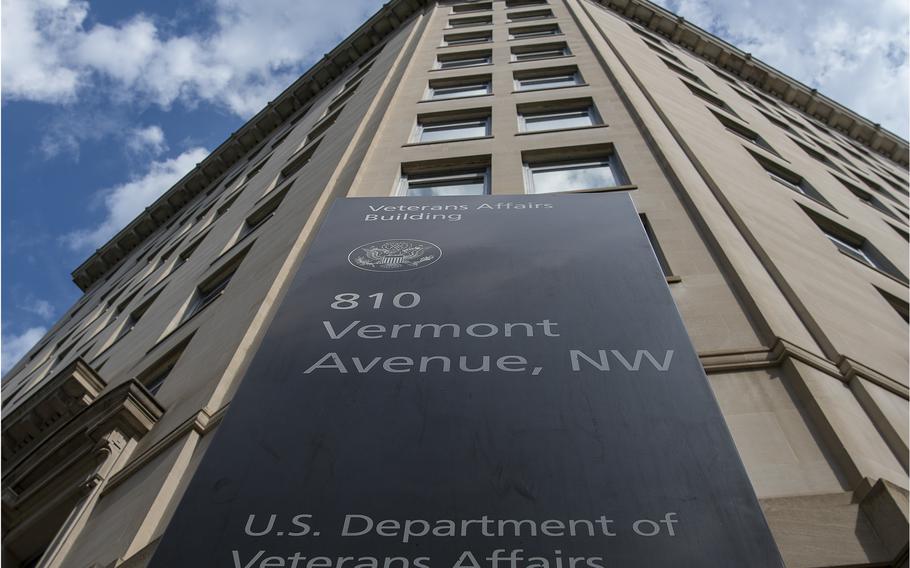
The Department of Veterans Affairs headquarters building as seen in Washington, D.C., on July 6, 2022. (Carlos Bongioanni/Stars and Stripes)
WASHINGTON — Staff burnout, turnover and recruitment challenges during the coronavirus pandemic contributed to severe shortages for nurses and other jobs at most medical facilities run by the Veterans Health Administration, according to a review by the inspector general for the Department of Veterans Affairs.
Findings for VHA facilities surveyed showed problems resulting from the pandemic exacerbated existing personnel shortfalls for clinical and nonclinical positions.
“A limited labor pool, noncompetitive pay, COVID-19 requirements and a challenging hiring process were the most commonly reported factors that contributed to personnel shortages,” according to the report, which was published in September.
Clinical shortage areas spanned practical nursing, psychology/psychiatry, medical technology and primary care.
The report stated the need for inpatient hospitalizations grew during the pandemic, while elective and outpatient care decreased as consumers avoided public contact.
The VHA responded to changes in workloads at hospitals by “training outpatient doctors and elective procedure nurses in competencies necessary to deliver care in inpatient settings,” the report said.
The VHA also increased telehealth care to limit in-person interactions and mitigate the spread of the virus, according to the report.
Shortages in nonclinical areas were most severe for custodial work, medical support, police, engineering and food service. The need for custodial workers topped the list. Nearly 70% of facilities reported a severe occupational shortage of custodial workers in fiscal 2022, up from 42% in fiscal 2021 and 47% in fiscal 2020.
For the review, the inspector general compared personnel shortages and hiring needs before the pandemic -- from January 2019-Februrary 2020 — to staffing levels during the pandemic — from March 2020-January 2023.
In addition to VHA facilities, the review also looked at staffing levels at other health care sites that receive federal funding, including prisons, military clinics and hospitals, and Medicare- and Medicaid-certified nursing homes. The study found similar shortfalls.
Nurses and medical officers were the most common positions with identified shortfalls during the pandemic in all federally funded facilities reviewed, according to the report.
Data collected for the VHA found staffing shortages at 139 of 140 facilities. The report looked at the scope of shortages, the impact on health care and strategies that the VA deployed to mitigate turnover and fill vacancies.
“All 139 VHA facilities reported at least one severe occupational shortage in [fiscal] 2022, a departure from [fiscal] 2020–2021 VA [inspector general] reports in which several facilities reported no severe occupational shortages,” according to the review.
The VHA said jobs labeled as having “severe occupational shortages” refer to occupations that historically are difficult to fill.
Twenty-two occupations were deemed as having a “severe occupational shortage” by at least 20% of VHA health care facilities in fiscal 2022, compared to 19% in fiscal 2021 and 17% in fiscal 2020, the report said.
In fiscal 2022, 91% of facilities reported nursing as having a “severe occupational shortage.”
By contrast, 73% of facilities in fiscal 2021 reported nursing with a severe occupational shortfall. In fiscal 2020, nursing was reported as a severe occupational shortage by 72% of facilities.
“Widespread occupational shortages across VHA predate the pandemic, and so do efforts and approaches aimed at reducing those shortages,” the report noted.
Factors that contribute to severe occupational shortages have included lack of qualified applicants, noncompetitive compensation, staff turnover, and recruitment challenges, according to the report.